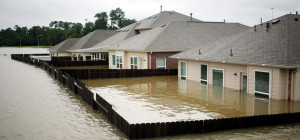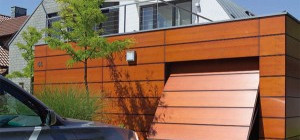Your garden, terrace and balcony are ideal playgrounds for your creativity when it comes to lighting. Decorative illumination of your garden should be one aspect of your outdoor lighting plan but another important lighting consider is safety. Be sure to light your footpaths to prevent accidents and your entries to add a sense of security to your home.

Safety and creativity merge when planning your outdoor lighting. A lit driveway, footpath to the front door and brightly lit entrance always provides a welcoming and secure feeling for homeowners and guests alike.
Pay attention that steps and problematic corners are well light without glare. Using energy-saving lamps and LEDs that can either stay lit all night or are triggered by heat or motion sensors will keep your energy bills as low as possible without compromising your safety.
By contrast, the principal purpose of lighting your garden is decorative therefore this is not the place to use bright, overwhelming floodlighting. You will achieve the best effect with some well positioned, low-to-the-ground fixtures to compose a sight-scape of light and shadow. You can create optical ‘magnets’ by side lighting a wall with an outdoor wall sconce to accentuate its relief. Light your trees from behind and upwards and your bushes from within. Another stunning effect is to re-stage a picturesque single object for its visibility at night.
When you’re enjoying an evening with your guests on your terrace you might want to consider lanterns in concert with bulkhead luminaires oriented towards the terrace and small spotlights illuminating the flowers.
By creating these contrasting effects you would want to give some consideration to appropriate lighting fixtures for paths for the occasional stroll in your garden. The difference in luminosity shouldn’t be to strong between those paths and the darker areas in your garden, as our eyes adapt quickly to half-light. There’s no need for overly bright light on your paths.
Steps, terraced areas, particularly behind walls, and expanses of water need to be clearly visible. You should put some extra care when planning lighting for steps. The entire stepped area should be lit by combining several sources of lighting. Overall lighting that isn’t too bright should make all steps visible. Then it’s best to illuminate each step individually by glare-less side lighting. Again, for all-night use you might choose to have these features controlled by motion or heat sensors.
Cables, bulbs, and lamps have to fit the environment. Humidity, fallen leaves, snow and changing climatic conditions all take their toll on materials and installations. Some states require a minimum depth for electrical cables. It is therefore best to seek professional advice at the planning stage of your outdoor electrical installations.
Typically 60 to 75 watts of light provides sufficient, effective illumination in modern outdoor light fixtures. Higher wattage should be avoided, as it causes glare and distraction rather than highlighting the natural appeal of your home's façade.
Exterior fixtures should be mounted at a height that is just above eye level or 66 to 70 inches from the ground. Do not let the top of the fixture extend beyond the top of the doorway. If space allows, one fixture on either side of the door is always appealing. If space is not available, one carefully chosen fixture will be great! You will want to install singles fixture on the same side as the doorknob so shadows are not cast on visitors' faces in your entryway.
Last but not least you should be aware of how the light inside your house affects the lighting outside. Too much light coming from inside the house will have a detrimental effect on the sight-scape you created in your garden and create glare when sitting on your terrace.
[youtube https://www.youtube.com/watch?v=dc0D85nhvpE]







